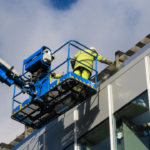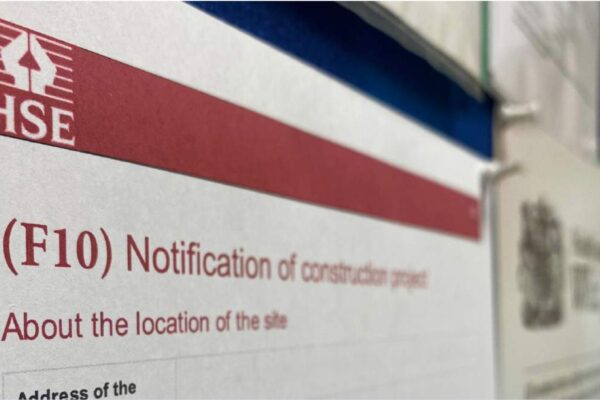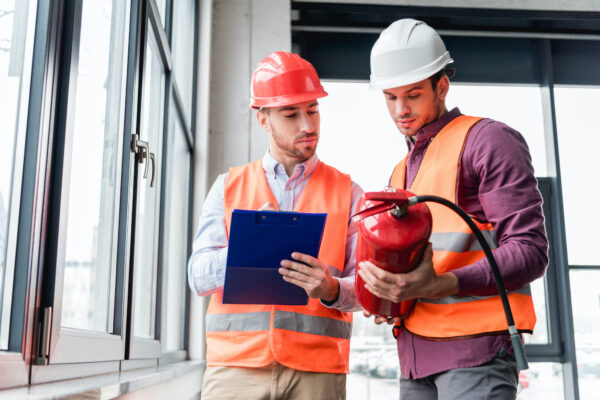Fire Risk Assessment
One of the most crucial risk assessments you’ll ever conduct will be the ones you do relating to fire. As an employer, owner, facilities manager or risk assessor, you count as a ‘responsible person’ (RP) under UK law, which means that you have to be proactive in reducing the risks of fires in non-domestic, industrial, commercial, and residential properties.
You need to make sure you’re carrying out fire risk assessments and taking steps towards preventing fires in your buildings and protecting those inside by making safe decisions.
This post will help you these all-important steps towards a fire-free workplace.
Why is Fire Risk Assessment so important?
Fires taking place in your business can be fatal and devastating to both the people working in the building and to the future of your company. The moral, legal, and financial implications of fire safety are significant.
The safety of the people in your building is paramount, of course, so this is the primary objective of a fire risk assessment. Legislation such as the The Regulatory Reform (Fire Safety) Order in England and Wales, Fire (Scotland) Act, and The Fire and Rescue Services (Northern Ireland) Order is in place to make sure people take responsibility for fire safety in the workplace. Preventing fire will also protect physical assets of property and goods.
It’s so vital to take steps to prevent the potential risk to life, reputation, and assets caused by fire, which is why a fire risk assessment is essential.
What does Fire Risk Assessment involve?
If you want to make sure that you are on the right side of the law, and providing the best protection against fire for your building and workforce, it will help to be thorough and strategic.
Your Fire Risk Assessment will require a physical inspection of your work premises to check the adequacy of fire controls, and the need for additional measures. It will cover four key areas:
- Awareness of physical context (building and people)
- Fire Prevention strategies
- Emergency Plans, Roles, and Training for dealing with fires
- Administration and Record keeping
If you want to conduct an effective Fire Risk Assessment, a systematic procedure coving the above areas should help you to evaluate the risk factors in your workplace, gauge the likelihood and possible consequences of fire, and identify the best fire control measures to ensure the safety of your workforce.
How to do it: 10 Steps to Fire Risk Assessment
As a Responsible Person, you will benefit from taking a step-by-step approach to Fire Risk Assessment, and using a template to keep a record of your findings. When it comes to something as serious as fire safety, you want to make absolutely sure that nothing is overlooked or forgotten.
Depending on your context, some details may vary, but in general these 10 steps should keep you on the right path:
Keep a Record of Key information:
This includes who is the Responsible person (RP), the site address, inspection date, name of the assessor, and review dates.
Know your Premises:
How many floors are there (including basement), and what is the approximate floor area? What is relevant about the construction (age, bricks or timber, etc)? What is the primary usage (offices, hotel, shop), and secondary usage (function room, kitchen) of the space?
Focus on People:
What is the maximum number of people in the building at different times and days of the week? How many people have mobility issues and other vulnerabilities, and are there any other occupants who are especially at risk of fire (e.g., sleeping, disabled, in remote areas, young, elderly, visiting, people whose 1st language is not English)?
Identify hazards:
These could include:
- Electrical sources of ignition
- Smoking
- Arson/ deliberate ignition
- Portable heating
- Fixed heating installations
- Cooking
- Lightening
- Dangerous substances
- Housekeeping (storage of combustibles and maintenance of clear gangways)
Consider your evacuation strategy:
If you can safely evacuate everyone immediately, this is a ‘Single Stage Evacuation, but if there are some people who are dependent on staff to assist evacuation, you have ‘Progressive Horizontal Evacuation’. If it is not safe or viable to evacuate people, and they need to stay in situ until the fire is controlled, this is ‘Delayed Evacuation’.
Check Fire Safety Secondary Control Measures:
These are the things you do to reduce risk in the event of a fire, and include:
- Means of escape
- Measures to limit fire spread
- Emergency escape lighting
- Fire safety signs and notices
- Means of giving warning in case of fire
- Manual fire extinguishing appliances
- Other relevant fixed systems and equipment (e.g., smoke curtains)
- Firefighter switch – high voltage luminous tube signs etc.
Management of fire safety:
This is the admin that shows you’re on top of things, and provides clear information about procedures, drills, training, maintenance and testing. It includes the names of nominated competent people and the areas they are responsible for, arrangements for supponing fire services in the event of a fire, and liaising with them for familiarisation visits, as well as building layout plans and fire assembly point information.
Training and drills:
Check that a Responsible Person is designated to oversee training and fire drill procedures, and that safety information is being communicated to employees and visitors.
Testing and maintenance:
Routine checks for safety equipment should be scheduled and documented, including for:
- Alarms
- Lighting
- Extinguishers
- Escape routes
- Rising mains
- Sprinklers
Remedy action plan
Your Fire Risk Assessment should document areas for concern, and time-bound strategies to improve the situation.
A fire risk assessment doesn’t have to be a fancy document with all the bells and whistles but can be as basic as a table in a Word document. The most important thing to remember is to ensure the risks are being identified and recorded, and consequent action is being taken to keep everybody and the property safe.
The process of carrying out a fire risk assessment doesn’t have to be complicated, especially when you’re using a basic template covering the ten steps outlined here, including as much information as possible to ensure you’re doing everything you can to prevent potential risks. There’s plenty of information available to help you do this yourself, or you can hire a professional from the Institution of Fire Engineers (IFE) – Register of Fire Risk Assessors and Auditors to do it for you.
With all the information you’ve collected, you can start putting safeguards into place, including making sure everyone is trained with basic fire safety knowledge so that your workplace is filled with competency and confidence when it comes to fire safety.
Are you a Responsible Person at your workplace? Get in touch for additional training or support.





